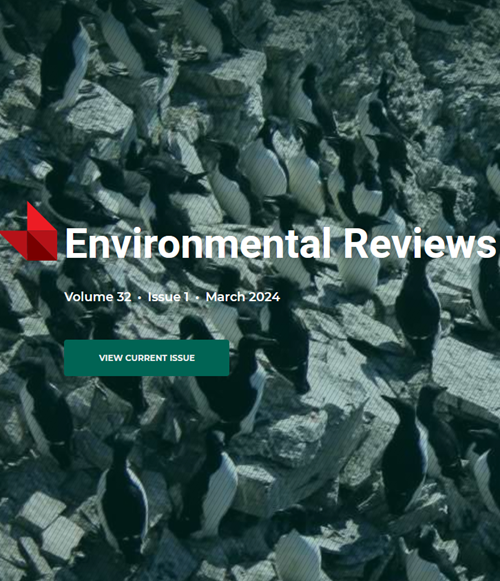气象干旱指数空间与气候分布的元分析综述
IF 5.1
3区 环境科学与生态学
Q2 ENVIRONMENTAL SCIENCES
引用次数: 2
摘要
近年来的气候异常被认为是气候变化造成的。特别是,干旱频率的增加已经开始影响我们的生活方式。迫切需要研究和监测干旱,以防止严重破坏。干旱监测研究是利用气象干旱指数进行的,该指数是天气数据的汇编。尽管天气数据高度依赖于气候带,但现有研究并未考虑气候带的干旱指数。本研究旨在确定气象干旱指数研究的空间和气候分布,并通过元分析综述提供干旱指数和气候分类的良好匹配组合。数据以研究论文的形式使用,涵盖2011年至2021年发布的帕尔默干旱严重程度指数(PDSI)、标准化降水指数(SPI)和标准化降水蒸发蒸腾指数(SPEI)。趋势表明,自2015年以来,SPEI已成为三大干旱指数中干旱监测研究的领先指标。此外,由于中国的气候事件,亚洲是此次干旱研究的重点。每个大陆和气候分类都被分配到不同的主导干旱指数。例如,PDSI常用于北美和大陆气候,SPI常用于非洲、欧洲、南美以及热带和干燥气候,SPEI常用于亚洲和温带气候。它使用基于相同气候带的气象指数来评估干旱监测研究很少的国家。监测和预测干旱模式将改善人类的基本需求。本文章由计算机程序翻译,如有差异,请以英文原文为准。
A Meta-analytic Review on the Spatial and Climatic Distribution of Meteorological Drought Indices
Abnormalities in climate in recent years have been attributed to climate change. In particular, an increase in the frequency of droughts has started to influence the way we live. There is an urgent need to study and monitor droughts to prevent severe damage. Drought monitoring research is conducted using the meteorological drought index, a compilation of weather data. Although weather data are highly dependent on climatic zones, existing studies have not considered the drought index by climatic zones. This study aims to identify the spatial and climatic distribution of meteorological drought index studies and provide a well-matched combination of the drought index and climatic classification through a meta-analytic review. Data were used in the form of research papers covering the Palmer Drought Severity Index (PDSI), Standardized Precipitation Index (SPI), and Standardized Precipitation Evapotranspiration Index (SPEI) published from 2011 to 2021. The trends showed that SPEI has become a leading index for the study of drought monitoring among the three drought indices since 2015. Additionally, Asia was the focus of much of this drought research due to climate events in China. Each continent and climate classification was assigned to a different dominant drought index. For example, PDSI was commonly used in North America and continental climates, SPI in Africa, Europe, South America, and tropical and dry climates, and SPEI in Asia and temperate climates. This evaluates countries, in which drought monitoring studies are rare, using a meteorological index based on the same climatic zones. Monitoring and predicting drought patterns would improve the basic needs of humankind.
求助全文
通过发布文献求助,成功后即可免费获取论文全文。
去求助
来源期刊

Environmental Reviews
环境科学-环境科学
自引率
3.50%
发文量
45
期刊介绍:
Published since 1993, Environmental Reviews is a quarterly journal that presents authoritative literature reviews on a wide range of environmental science and associated environmental studies topics, with emphasis on the effects on and response of both natural and manmade ecosystems to anthropogenic stress. The authorship and scope are international, with critical literature reviews submitted and invited on such topics as sustainability, water supply management, climate change, harvesting impacts, acid rain, pesticide use, lake acidification, air and marine pollution, oil and gas development, biological control, food chain biomagnification, rehabilitation of polluted aquatic systems, erosion, forestry, bio-indicators of environmental stress, conservation of biodiversity, and many other environmental issues.
 求助内容:
求助内容: 应助结果提醒方式:
应助结果提醒方式:


